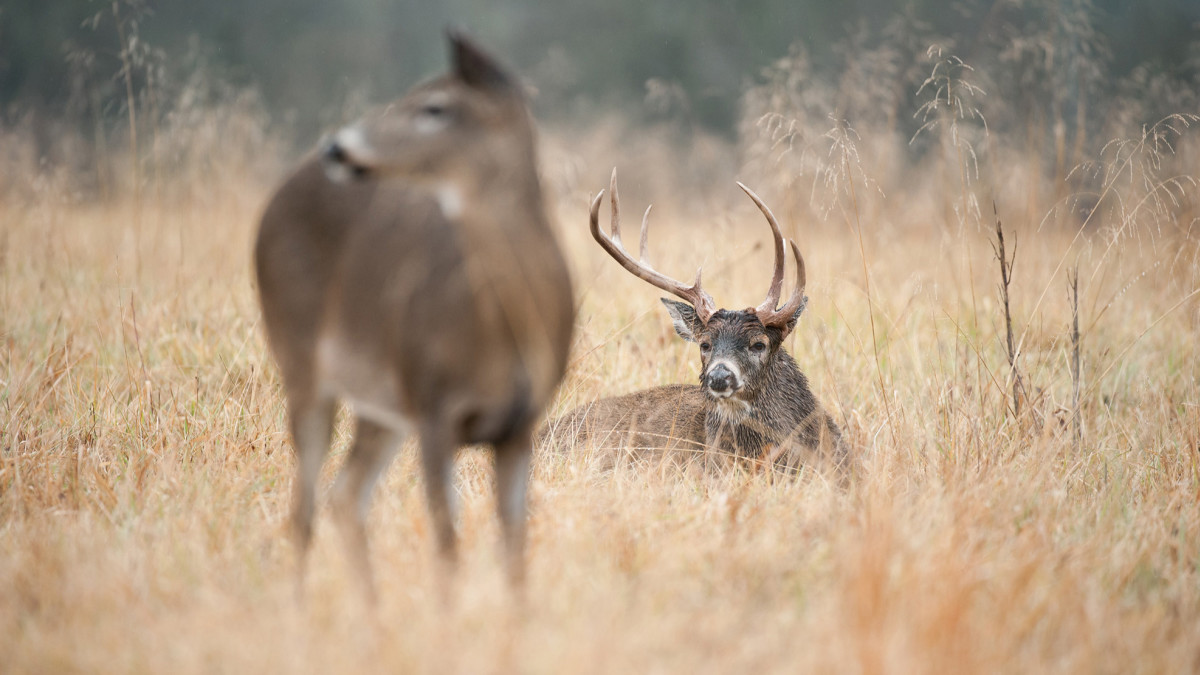
If the whitetail rut is the deer hunter’s Super Bowl, then lockdown is the closest thing there is to a halftime show. Some really exciting things have just happened and you know there’s a lot of action to come, but at this very moment you’re stuck in your seat wishing for something more.
Lockdown is one of those widely used labels within the whitetail hunting community that’s only halfway understood. It’s a perfect example of the kind of insider lingo that often intimidates or confuses those new to the pursuit. It’s a term that has been sort of lost in translation.
At the highest level, lockdown describes a time period in the whitetail breeding season during which actual breeding has peaked. This is when the most does in the area are in estrous and receptive to bucks. Breeding occurs on a bell curve in any given deer population, with some does being bred early and some late, but the vast majority falling sometime in the middle. The tallest part of the bell curve, which is referred to as lockdown, typically falls in mid-November for most parts of the country.
Although does are the most important factor for lockdown, it’s really buck behavior that leads to the label. This is because when the highest number of does are ready breed, it leads to the highest number of bucks being with those does and attempting to breed them. When a buck is with a receptive doe, he’s often described as being locked on her. In this scenario, a buck will stay tight to this receptive doe for 24-48 hours, sometimes even longer, breeding her regularly and fending off other suitors. During this time, bucks will frequently try to corral their doe into off-the-wall or extra-thick locations to minimize intrusions and competition, and many times will reduce their overall travel.
When the majority of does are ready to breed, local bucks have the highest chances of the year of finding a receptive doe and locking her down. When this time period arrives, it leads to a noticeable reduction in buck activity. Sometimes it’s a day long window of lackluster movement smack dab in the middle of what should be the very best time of the year for deer hunting. All is not lost, though.
An important aspect to remember about the whitetail lockdown is that it is not all encompassing. Even at the time of peak breeding, there will still be some bucks at any given moment that don’t have a doe. In a moment’s notice a buck might come off one doe and be back on the search for the next. The key to hunting success at this time is to simply be in the tree and ready when those moments occur.
Typical rut hunting locations, such as pinch points or doe bedding areas, are still the spots to be. It’s also worth noting that if you find a buck locked onto a doe in some obscure pocket of cover, they likely will be back in that spot again sometime soon. If you’re able to slip in undetected, there’s a great chance they’ll cycle back through again.
The whitetail lockdown, while sometimes a painfully slow time to be in a tree, is ultimately just a blip on the calendar that can pass as quickly as it takes a buck to run from one doe to the next. The savvy rut hunter understands both the realities and randomness of the whitetail lockdown, and ultimately knows that nothing matters more at this time of year than being in the woods.
A football fan wouldn’t leave the Super Bowl just because of a boring halftime show, and the same should be true for deer hunters during the lockdown phase of the rut.
Feature image by Matt Hansen.





